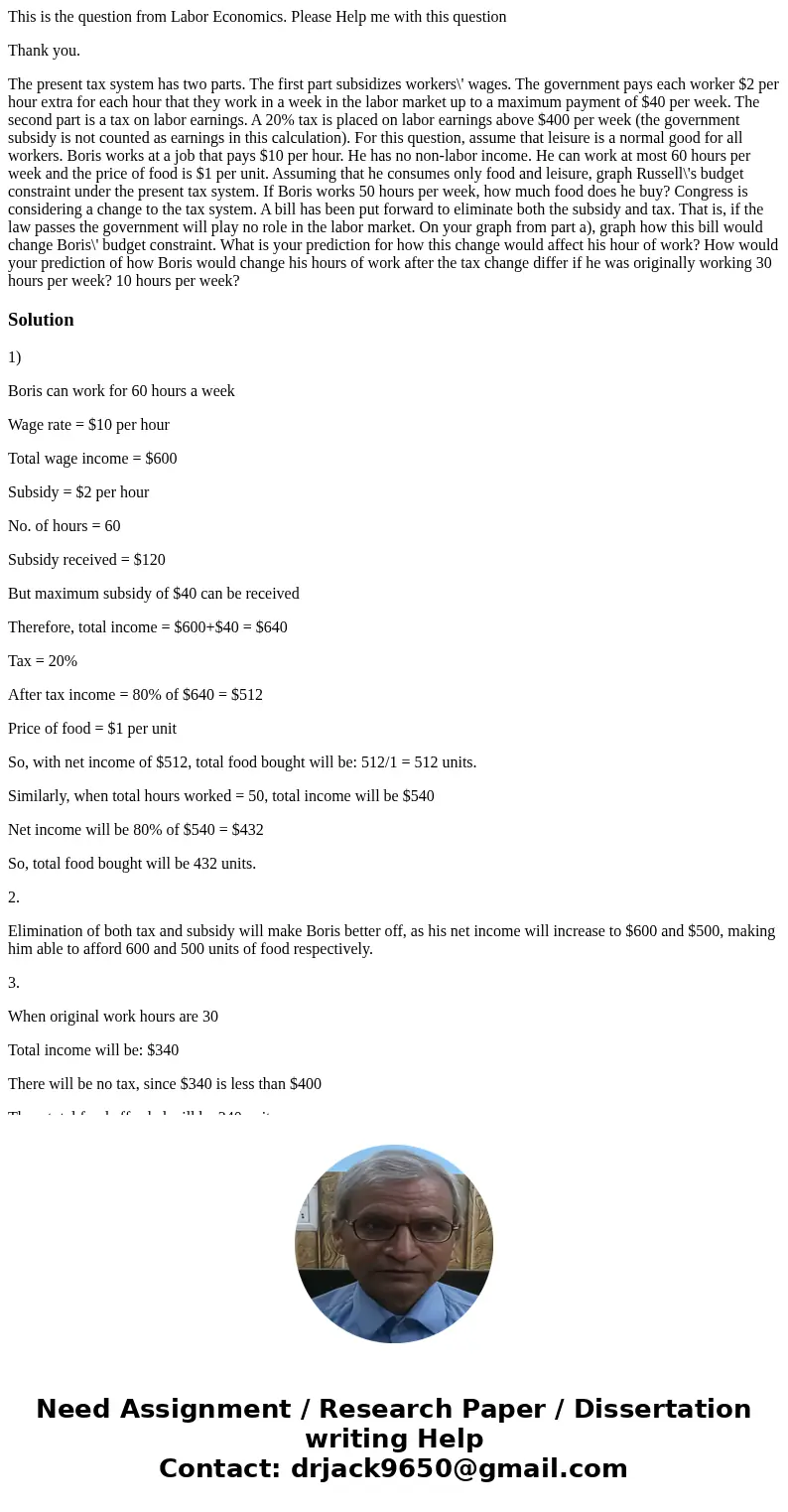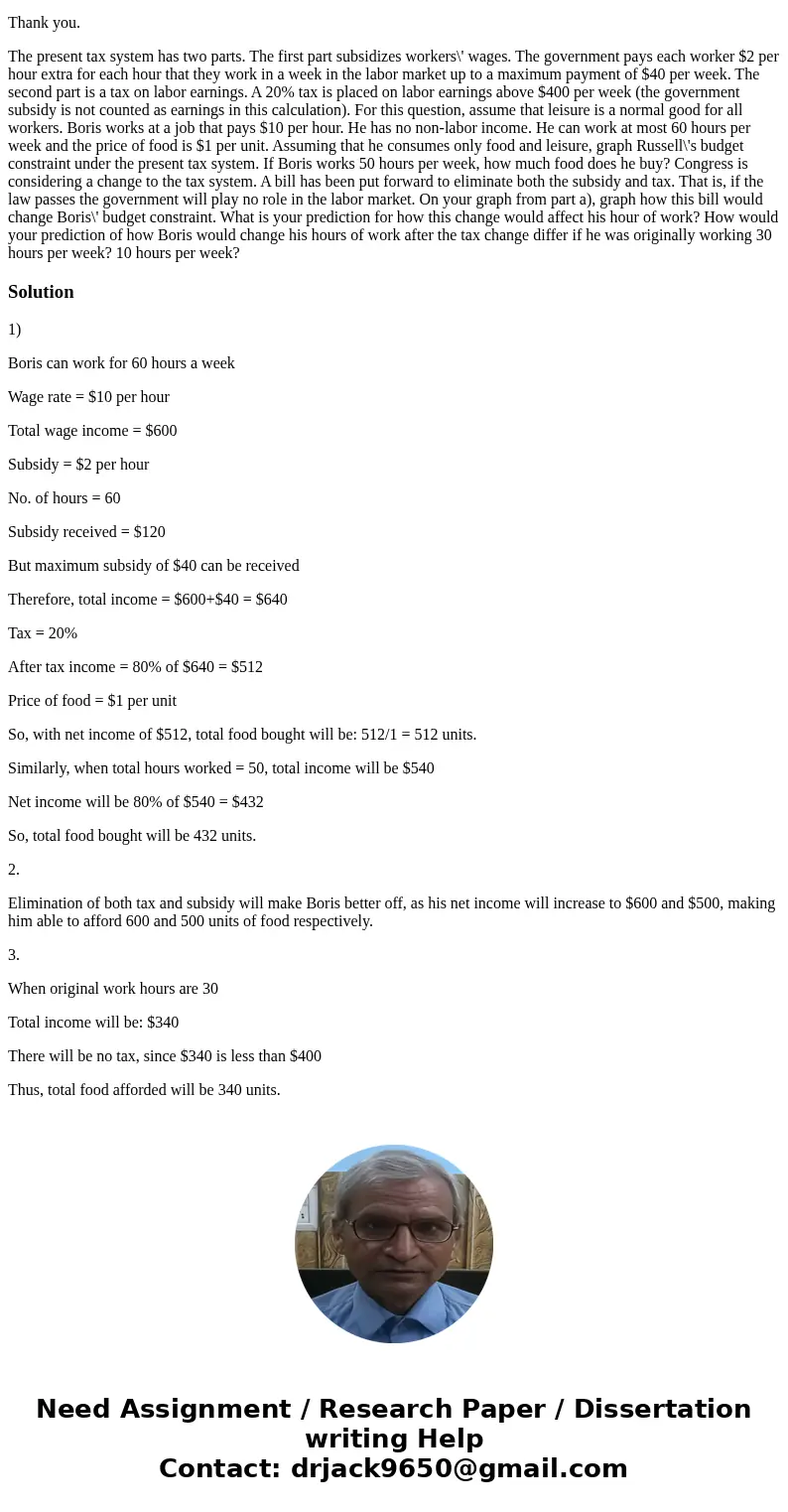This is the question from Labor Economics Please Help me wit
This is the question from Labor Economics. Please Help me with this question
Thank you.
The present tax system has two parts. The first part subsidizes workers\' wages. The government pays each worker $2 per hour extra for each hour that they work in a week in the labor market up to a maximum payment of $40 per week. The second part is a tax on labor earnings. A 20% tax is placed on labor earnings above $400 per week (the government subsidy is not counted as earnings in this calculation). For this question, assume that leisure is a normal good for all workers. Boris works at a job that pays $10 per hour. He has no non-labor income. He can work at most 60 hours per week and the price of food is $1 per unit. Assuming that he consumes only food and leisure, graph Russell\'s budget constraint under the present tax system. If Boris works 50 hours per week, how much food does he buy? Congress is considering a change to the tax system. A bill has been put forward to eliminate both the subsidy and tax. That is, if the law passes the government will play no role in the labor market. On your graph from part a), graph how this bill would change Boris\' budget constraint. What is your prediction for how this change would affect his hour of work? How would your prediction of how Boris would change his hours of work after the tax change differ if he was originally working 30 hours per week? 10 hours per week?Solution
1)
Boris can work for 60 hours a week
Wage rate = $10 per hour
Total wage income = $600
Subsidy = $2 per hour
No. of hours = 60
Subsidy received = $120
But maximum subsidy of $40 can be received
Therefore, total income = $600+$40 = $640
Tax = 20%
After tax income = 80% of $640 = $512
Price of food = $1 per unit
So, with net income of $512, total food bought will be: 512/1 = 512 units.
Similarly, when total hours worked = 50, total income will be $540
Net income will be 80% of $540 = $432
So, total food bought will be 432 units.
2.
Elimination of both tax and subsidy will make Boris better off, as his net income will increase to $600 and $500, making him able to afford 600 and 500 units of food respectively.
3.
When original work hours are 30
Total income will be: $340
There will be no tax, since $340 is less than $400
Thus, total food afforded will be 340 units.


 Homework Sourse
Homework Sourse